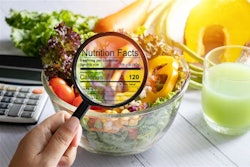
The annual fall harvest is in full swing, and for crops like soybeans and corn, it’s progressing faster than many industry analysts expected. Despite the ongoing disruption caused by the Coronavirus disease (COVID-19) pandemic, the agricultural outlook for 2021 is far more positive than it was in 2020. Even so, familiar challenges remain for food producers and others up and down the supply chain.
Facing an old enemy
The issue of food contamination looms especially large this year, as the pandemic has amplified consumer health concerns. There is a multitude of ways that toxic substances can contaminate crops, and when they do, everyone is affected.
Mycotoxins are perhaps one of the most prevalent contaminants that farmers must guard against. Data suggest they’re present in roughly one-quarter of all global agricultural products and that proportion could grow because of the effects of global warming. Water shortages and excessive heat can allow the molds and fungi that produce mycotoxins to permeate cracked kernels, making proper watering and irrigation methods critical to ensuring crop safety.
Insects and other pests reduce global crop yields by 20-40% each year, according to U.S. Department of Agriculture data, damaging kernels and inviting contamination during the growing season. Pesticides provide an effective deterrent, preserving kernel integrity so that harvested crops are safe for consumption.
Producers that store crops after harvest will have to take additional measures to combat contamination. Storage facilities must effectively protect grain and other crops from elevated moisture and allow for sufficient airflow, or they could become breeding grounds for several types of molds and fungi. Among these, magnaporthe oryzae, which contaminates wheat and rice, has been the most economically devastating, while Botrytis cinerea remains the most pervasive due to its broader host range.
While crops are especially vulnerable during the post-harvest period, producers must be vigilant throughout the year to maintain yield quality. If adequate measures aren’t taken, contaminated products could cause serious health problems for consumers. Mycotoxins can have cumulative effects that manifest over time, while other contaminants can result in acute toxicities. Moreover, all toxic substances are a burden on the food supply chain.
Less contamination, less waste
Improving food safety isn’t just a matter of consumer protection — it’s also a means for increasing producer efficiency and mitigating financial risk. When food is wasted, either due to contamination or poor yield quality, producers generally pay the highest price. Even when losses occur much farther down the supply chain, farmers inevitably feel the impact, as the total monetary return for all participants is reduced.
For example, a farmer might sell uncontaminated grain to a feed processor, who then plans to sell it to a cattle rancher. If the processor allows the grain to become contaminated, the rancher will pay less, reducing the processor’s profit margins. The following season, the processor will have less money to reinvest in grain and the farmer will have to sell at a discount or find other buyers.
When contaminated products sap profits from one supply chain participant, the entire industry suffers. Fortunately, a number of steps can be taken to mitigate the many risks associated with contamination.
1. Prioritize early detection
Discovering the presence of toxic substances in crops, livestock or animal feed can be unsettling, but it’s also extremely beneficial; it means that producers have the opportunity to act. The sooner they identify contamination, the sooner they can mitigate the associated risks, either through removal or corrective activities. Not only can this protect producer yields, but it also protects the investment of the operation that’s next in the supply chain and preserves total industry value. By the same token, the longer contaminated products remain in the supply chain, the greater the burden on participants.
2. Take advantage of technology
Throughout the year, producers implement a range of proven best practices to reduce the threat of mycotoxins and prevent mold growth. However, even the most carefully managed environments can become contaminated, particularly during storage. When that happens, technology can help minimize the damage. Producers in high-income countries can use lasers and controlled gusts of air to safely exterminate bacteria, fungi and other contaminants almost immediately. Prior to the growing season, gravity-sorting machines can separate infected kernels (which are generally lighter) from their healthy counterparts. Farmers without access to sophisticated technology can still reduce the presence and threat of mycotoxins through the manual removal of moldy or damaged kernels. Though this process will inevitably take time, it’s time well spent, particularly for subsistence farmers or smallholders, as it minimizes labor and financial costs they would otherwise incur at the end of the season.
3. Test products often
Companies across the supply chain should be regularly testing the products in their care, as this is the most effective means of preserving value for themselves and all other participants. Not only does consistent testing allow for timely treatment (when necessary), but it also creates trust and builds credibility. If contamination regularly occurs at one link, other participants can work together to devise a solution without losing confidence in the entire supply chain.
The harvest season is nearly half completed, and so far, the data suggests it’s been a good one. That should be welcome news to American farmers and ranchers, who have faced years of difficult production and market conditions that began well before the pandemic. By continuing to prioritize the fight against contamination, producers and other supply chain participants can ensure that more good seasons are ahead.


















